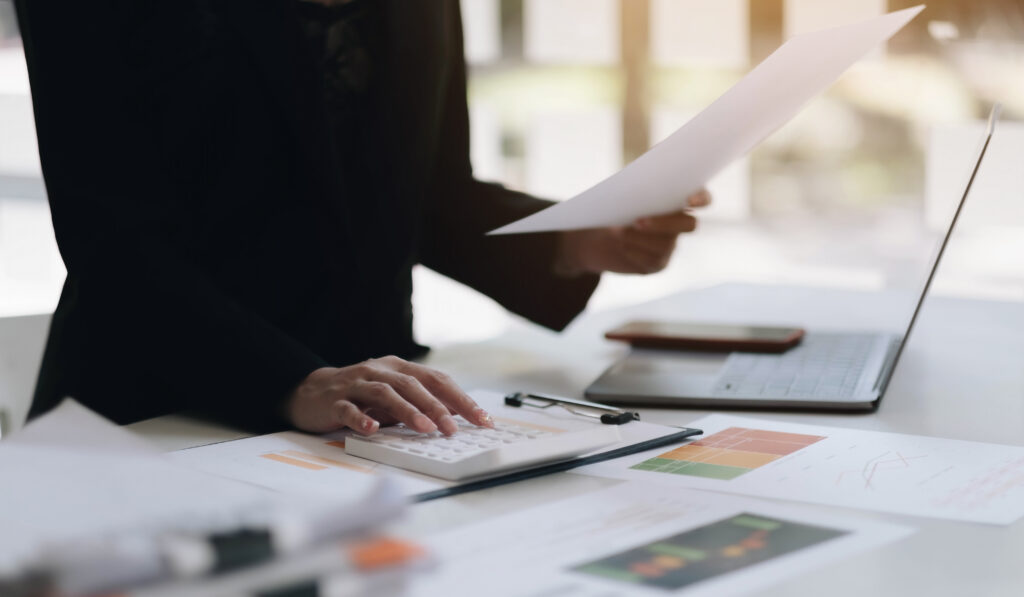Key Takeaways
- Refinancing means getting a new loan to pay off your old one, but with better terms and rates.
- Refinancing can help you save money over the life of your loan and give you more options when it comes to your money.
- Refinancing can also cost money, so it's important to think about how much you will save and how much it will cost.
- The first step in refinancing your business loan is to look over the terms of your current loan, figure out what you need, make a list of requirements, and compare lenders.
Managing your debt well is very important for the long-term success of your business. Refinancing your business loans could help you get better loan terms and improve your overall financial situation. What can you expect when you refinance? This guide will explain the benefits and steps involved in refinancing business loans, which will help you make smart decisions that are in line with your goals.
How Does Refinancing Work?
Refinancing a business loan involves taking out a new loan, either with the same lender or a different one, with different terms and conditions to pay off an existing loan. When you refinance, the new loan essentially replaces your existing loan.
The Advantages of Refinancing Business Loans
- When you refinance, you may be able to get lower interest rates, which can save you a lot of money over the life of the loan and make your cash flow better.
- You might be able to change the length of the loan, switch between fixed and variable rates, or work out more flexible payment plans.
- If your business has grown or your needs have changed, refinancing can give you access to more money for investments, growth, or working capital.
Things to Keep an Eye On
- Refinancing usually comes with costs up front, which can eat into some of the savings.
- Some loans may charge you a fee if you pay them off early, which can make refinancing more expensive overall.
- A hard credit enquiry is usually part of the refinancing process, and this can temporarily hurt your credit score.
The Refinancing Process
You need to plan and prepare carefully before you can refinance a business loan. Here’s a step-by-step guide to the typical refinancing process:
1. Look Over the Terms of Your Current Loan
Before you think about refinancing, you should carefully read the terms of your current loan(s). Know how much you still owe on the loan, what the interest rate is, when you have to pay it back, and any fees or penalties for paying it off early.
2. Take a Look at Your Finances
Find out where your business stands financially right now by checking your credit score, cash flow needs, and other things that show where your business stands. When lenders look at your refinancing application, they will look at these things, so it’s important to know exactly where you stand financially.
3. Look Into Lenders and Loan Choices
Look at a lot of different lenders, such as traditional banks, non-bank lenders, and private lenders. Look into different types of loans and compare their interest rates, fees, and repayment terms. You can also keep your current lender if they are willing to help you find ways to refinance.
4. Get the Paperwork You Need
Most of the time, lenders will need a variety of current documents to process your application for refinancing. These are things like bank statements, profit and loss statements, balance sheets, cash flow statements, and tax returns. Some private and unsecured lenders will let applicants choose between no-doc and low-doc options.
5. Get The New Loan
After you’ve found the lender and loan option that works best for you, fill out the application and send in any documents that are needed.
6. Wait for Approval
The lender will check your credit, verify your income, and do any other checks that are needed. If your application is approved, you’ll get a loan agreement that spells out the terms and conditions of the new loan.
7. Settle Your Refinance
If you go through with the refinancing, you’ll have to sign the final loan papers and finish any other tasks that are still outstanding. After everything is settled, the new lender will pay off your old loans, and the terms of your new loan will go into effect.
8. Management After Refinancing
Once your refinance is done, make sure you always pay it back on time. You should also check your business’s financial health from time to time to make sure the new loan is still a good idea.
Factors to Consider When Refinancing
There are a few important things to think about before refinancing:
- Interest Rate Difference: Make sure the new interest rate is much lower than your current one so that refinancing is worth it.
- Costs vs. Savings: Look at the costs, fees, and penalties that come with refinancing to see how much you could save.
- Credit Score and Financial Strength: When deciding whether or not to approve your refinance application, lenders will look at your income, credit score, and overall financial situation. If your business income and credit score go up, it’s usually a good idea to refinance.
- Loan Type and Terms: Think about whether a different type of loan (like a term loan or a line of credit) or a different way to pay it back (like a fixed or variable rate) would work better for you.
- Changing or Sticking With the Same Lender: Ask your current lender if they can give you the rates and terms you need. If not, look into the new lender’s reputation, customer service, and any fees that might come up when you move the loan.
Tips for Successful Refinancing
To maximise the benefits of refinancing and ensure a smooth process, consider the following tips:
- Set clear objectives: Determine what you aim to achieve with refinancing—lower interest rates, longer repayment terms, or better cash flow. Ensure that they align with your business goals.
- Watch the market: Keep an eye on interest rates and try to refinance when they are low. Don’t refinance when rates are high, because you’ll end up paying more over the life of the loan.
- Think about hiring a loan expert. Companies like Dark Horse Financial can help you through the refinancing process and help you make smart choices.
Need to Refinance Your Business Loan?
Refinancing can bring a lot of benefits to your business. Do you think your current loan can do with better terms and rates? We can help you assess your current business situation and match you with the right lenders and solutions.





